When it comes to a modern core HR software, there are seven essential modules you need to consider. However, if you had to prioritise one, the employee database would undoubtedly be the most important. Serving as a reliable and interactive list, it ensures the details of every employee in your organisation are accurate, up-to-date, and aligned with what your organisation deems important. This module facilitates quick and effortless access to specific employee data, allowing you to click into their records, retrieve the necessary information, and promptly return to what you were working on. We will go further into depth about this later in the blog, but it is important to note that all seven modules that we discuss today are key to ensuring smooth and efficient workforce management.
1. Position & Remuneration Library
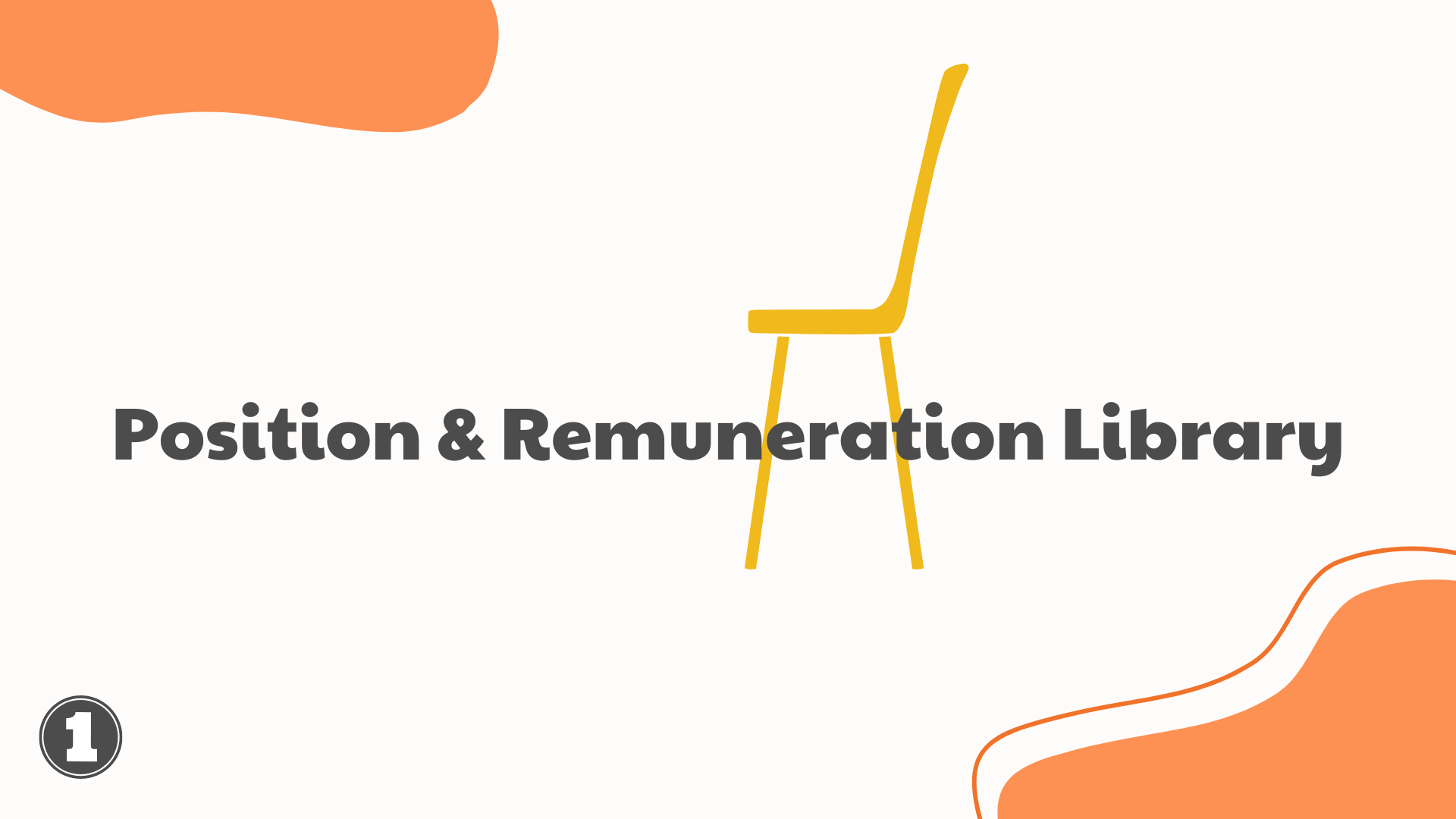
The ‘position & remuneration’ library should lie at the heart of any core HR software. It consists of all the unique positions that make up your organisation, while detailing the key aspects of each position. Your HR software should allow you to easily navigate this library, offering a centralised hub to effortlessly build and customise these positions. Within this, you should have the power to specify every important aspect of each position, ensuring clarity and cohesion across your organisation.
The key details of any position that HR must establish and maintain within the library:
- Remuneration
- Duties & responsibilities
- Qualifications
- Skills & experience
- Selection criteria
- Job descriptions
- Typical job ad
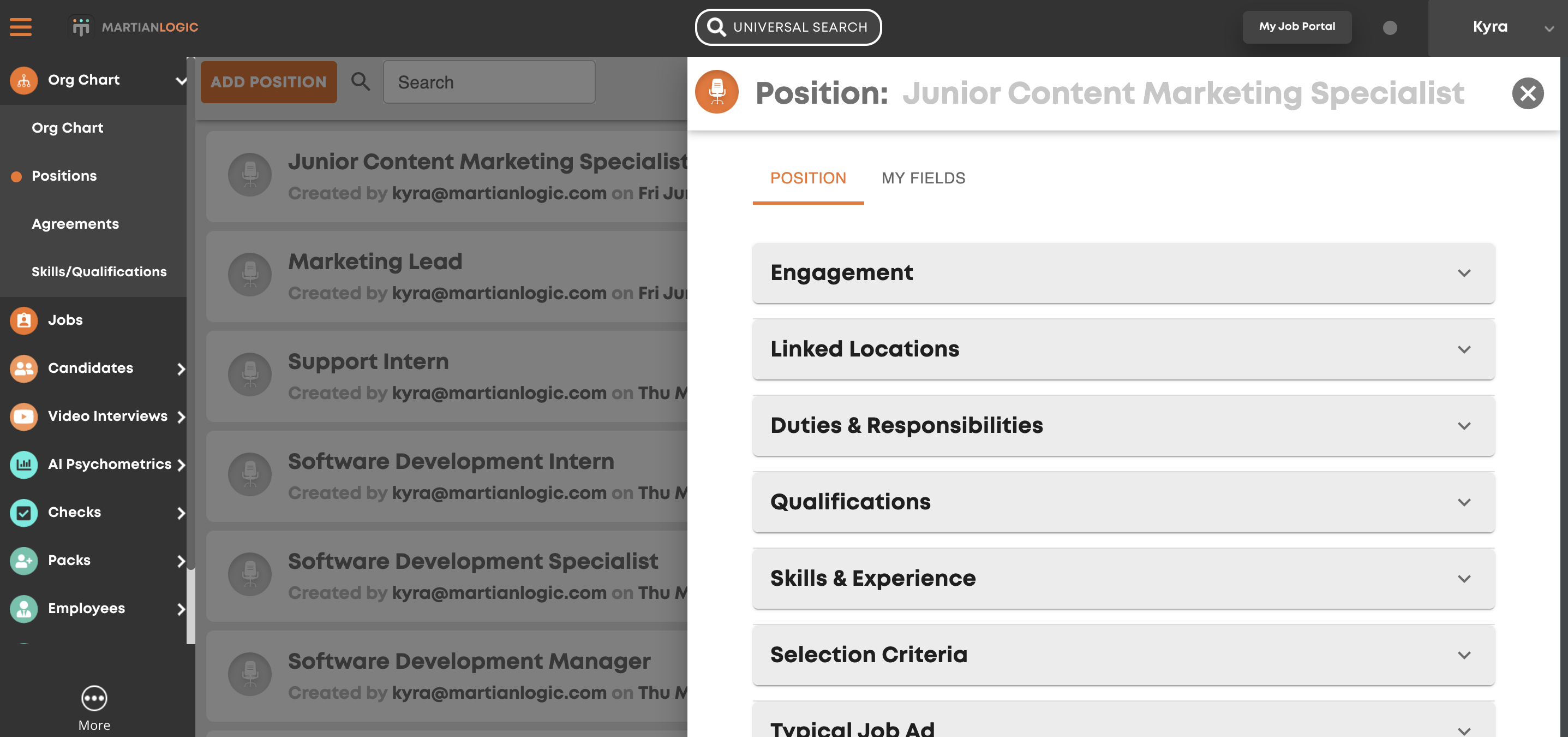
By effectively managing these position & remuneration elements using your HRIS, you can streamline the process of position creation and maintenance, ensuring accurate and up-to-date information for all roles within your organisation.
2. Org Chart

We believe that a modern, live, and up-to-date org chart is essential to any HR software. As you can imagine, it’s like having a visual map that brings clarity to reporting lines and departments. However, the true value of an org chart software lies in its ability to remain constantly up-to-date and reflect the ever-evolving nature of your organisation. Without the assurance of real-time updates, its utility and effectiveness are compromised. Therefore, it’s imperative to invest in an org chart that automatically maintains relevance and accuracy, ensuring that it stays organically up-to-date at all times.
For example, Martian Logic’s platform ensures that a modern and live-updating org chart is the hub of all organisational activities. It serves as the base for initiating efficient recruitment and onboarding processes, as well as the offboarding and change of conditions for employees. As you can see, it’s live and stays up-to-date with every change made within your organisation. For instance, once a new hire completes their onboarding pack, they will automatically be populated into the org chart. This way, the org chart always stays updated and reliable, saving time and eliminating the hassle of inputting this information manually.
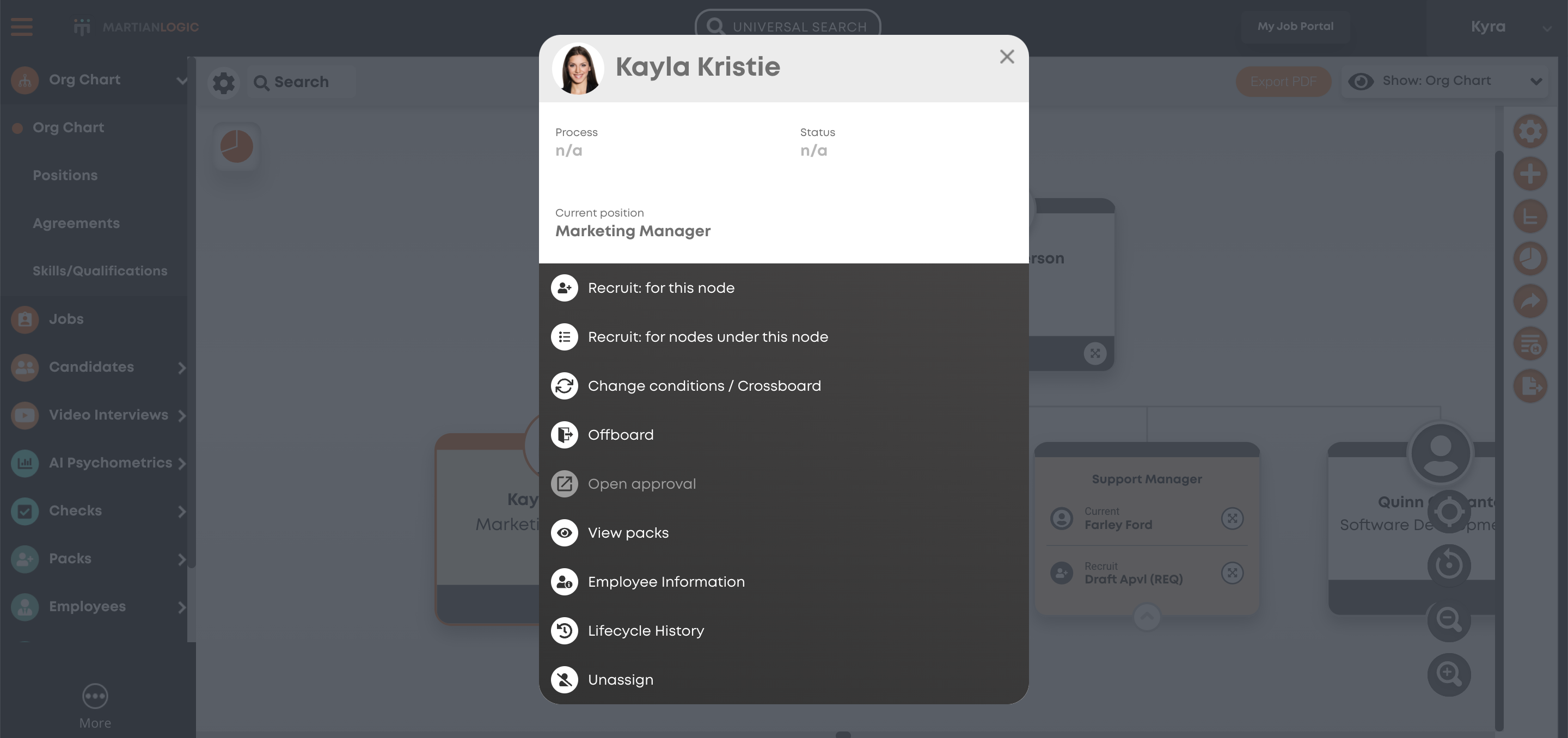
3. Employee Lifecycle

The employee lifecycle consists of 3 main stages:
- Recruiting & onboarding new employees
- Change of conditions throughout the lifespan of an employee
- Offboarding employees
At each stage of the employee lifecycle, HRIS features, such as custom approval workflows and onboarding packs, are vital in streamlining the related processes. They offer smooth management of the employee lifecycle, fostering collaboration and ensuring visibility for both the human resources team and managers. While these features offer numerous benefits, let’s focus on the ease of gaining quick and efficient approvals to initiate employment-related processes. Modern approval workflows should allow managers to effortlessly send approval requests to the relevant managers and executives for processes such as recruiting for a role or adjusting the salary of a current employee. With the ability to customise requisition forms and trust that data flows freely throughout these processes, managing the employee lifecycle should be extremely easy.
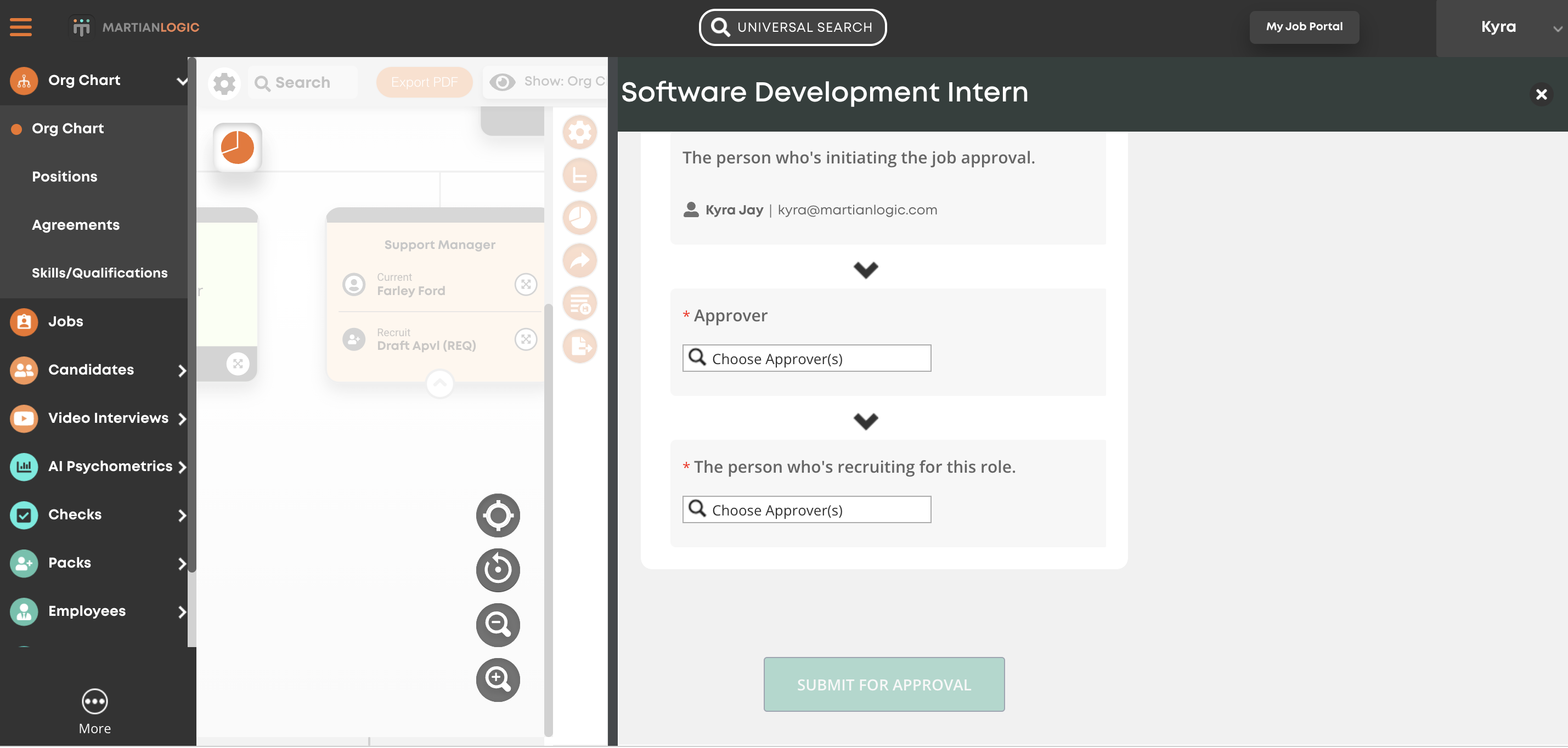
Another example is onboarding packs. When onboarding an employee, you should be able to simply move that employee into the onboarding stage in the process, select the relevant pack template, and with a single click, have all e-forms such as bank details form, tax form, personal details form, contract, and necessary documents such as code of conduct documents and training videos, personalised and ready to send off. As previously highlighted, when new hires complete the pack, they will seamlessly be integrated into the organisational structure and automatically added to the org chart. As previously mentioned, because all live processes in relation to the employee lifecycle can be initiated from this org chart, employees are set up for easy management of potential changes of conditions and offboarding process.
4. Employee Database

Customise the data your company requires to hold against your employee records
From its name, you may already have an idea about what the employee database entails. However, with high-level customisation and filtering capabilities, it becomes one of the most essential components of any modern core HR software. Your employee database module should be an agile and efficient system that allows you to customise the data that you want to capture against your employee records. This includes all employee data your organisation deems necessary, such as date of birth, driver’s licenses, emergency contacts, compliance documentation, and pay rise details. With platforms such as Martian Logic‘s, you as an admin can simply go into employee records and create a folder to contain all that data that you want to collect in whichever format you want, such as image uploads, dropdown options, textboxes, file uploads, and many more. For example, in industries like healthcare, certain certifications are required to perform specific duties. With an HRIS, you can effortlessly search for an employee and access copies of their certifications from a completely up-to-date and trustworthy database. You can easily check to confirm that your employees are up-to-date with all certifications and ensure your organisational operations run smoothly.
The ability to quickly have access to the employee records
Your employee database should help you understand your employees better by providing you with a user-friendly interface and advanced filtering options. Using HR software, you can filter employees by location, keywords, years of experience, availability, and even by your own custom fields. You should be able to quickly find an employee, go into their record, update or obtain the information you need, and promptly return to what you were working on. Any data that you need to obtain should all be accessible from a list, ensuring the timely retrieval and management of crucial details.
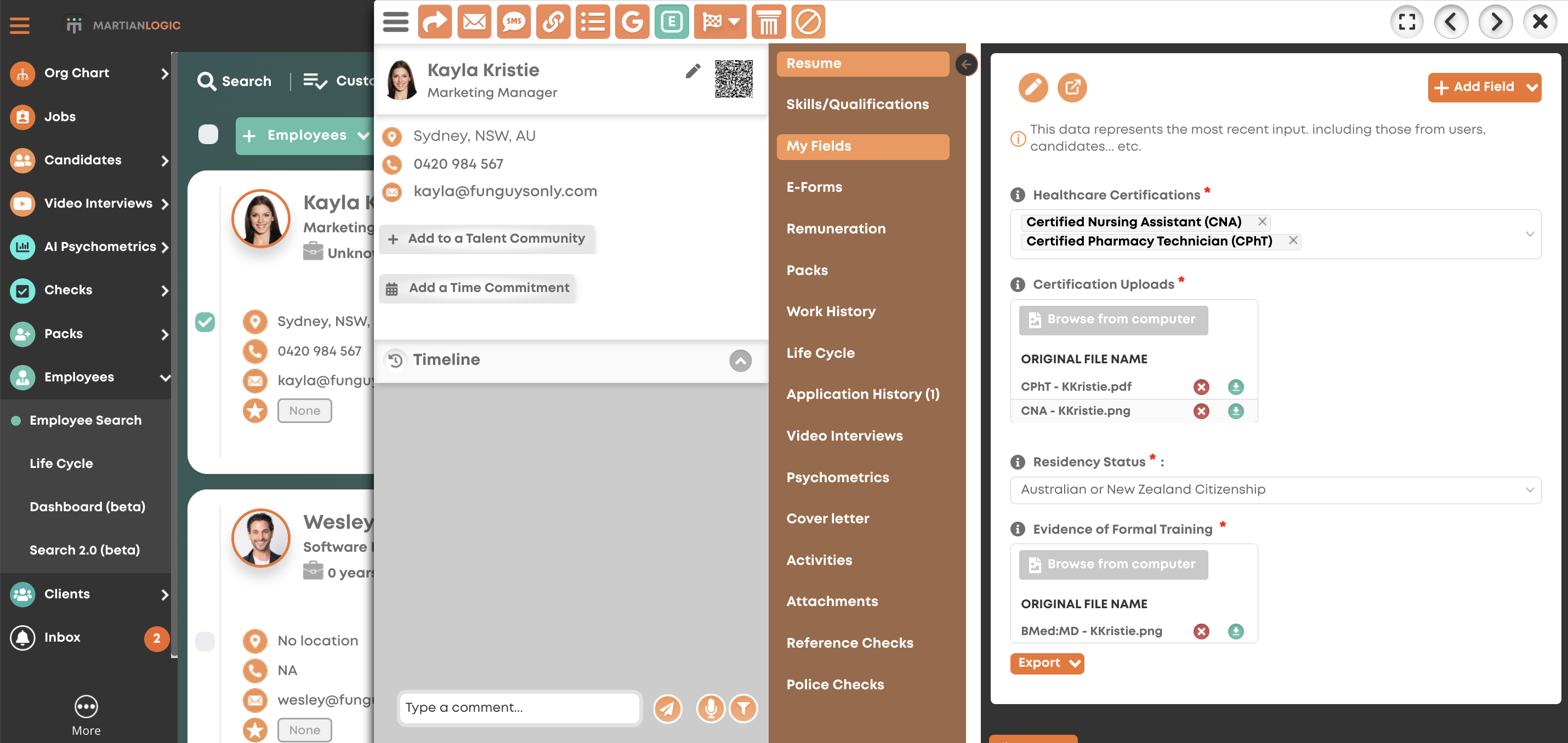
5. Employee Dashboard
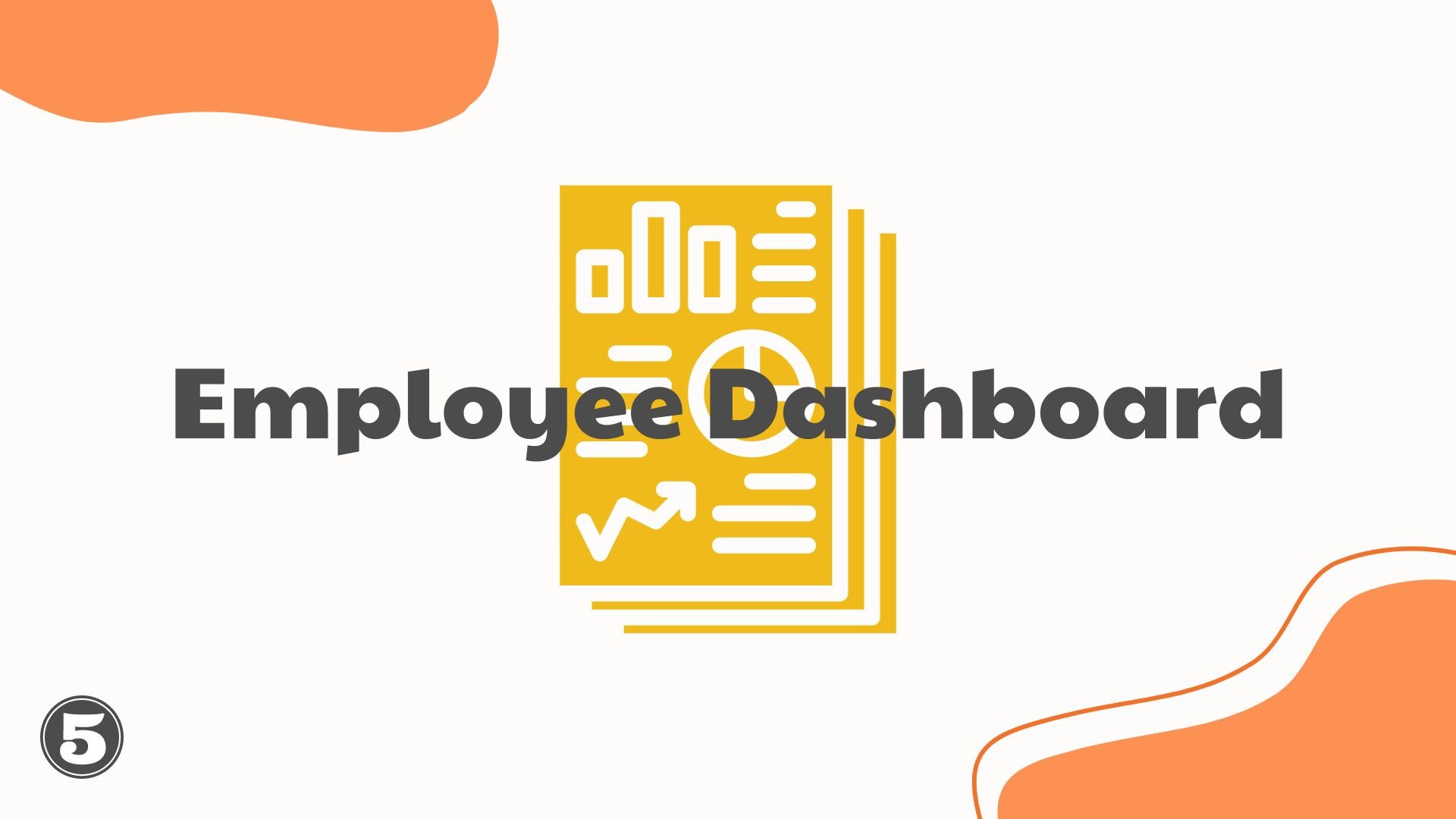
The employee dashboard goes hand-in-hand with the employee database. It is essential to any HR software as it can deliver you clear and customised data-driven insights about all employees in your organsation. Your employee dashboard should break down employee data into high-level statistics to provide a comprehensive summary of key insights that are tailored to meet your organisation’s specific needs. It should offer a convenient way to visualise and access meaningful statistics, such as the number of full-time, part-time, and casual employees in your organisation, enabling you to promptly address inquiries about your workforce with accurate and up-to-date figures.
6. Access Control
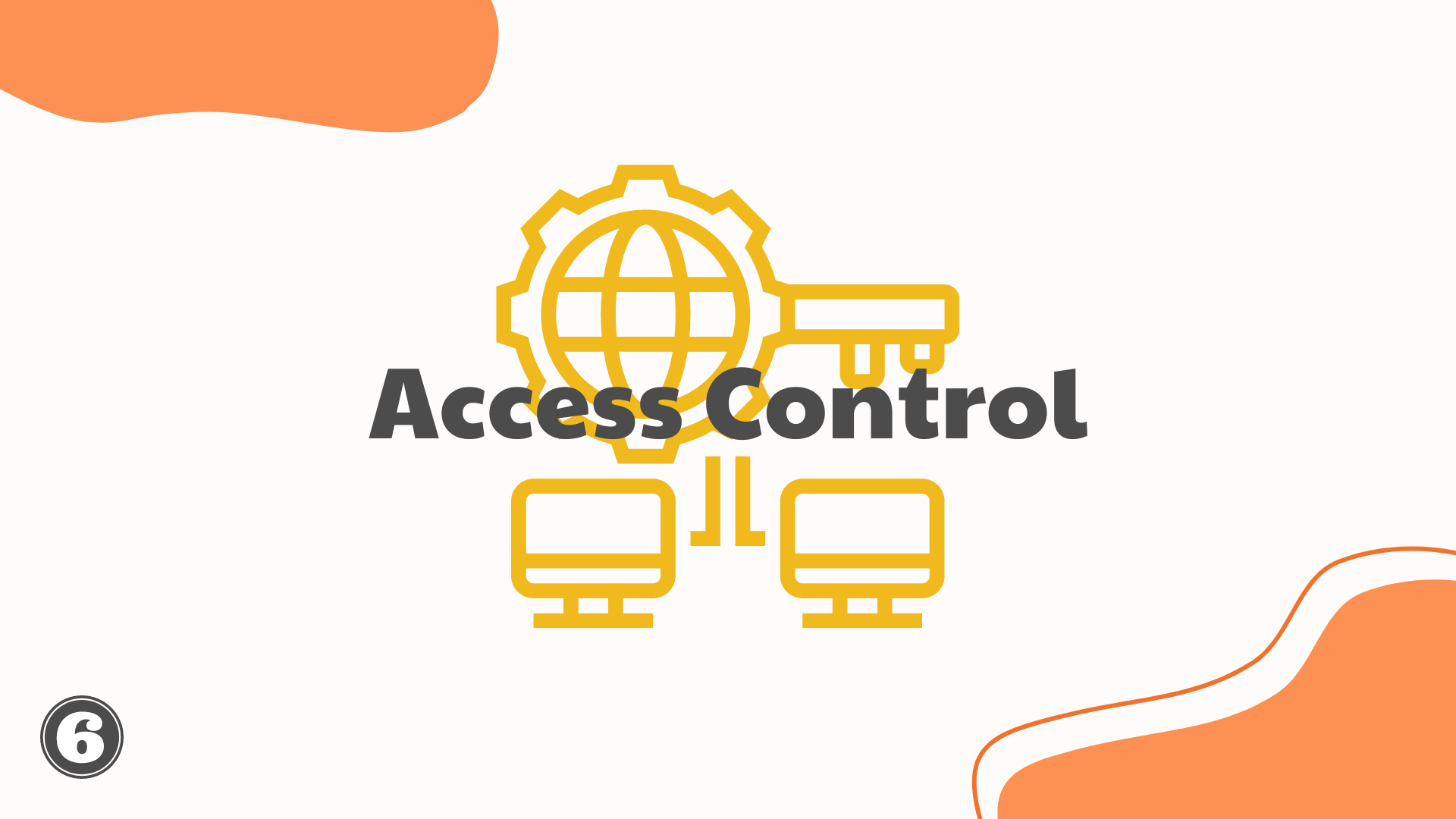
Every organisation worries about confidentiality and data breaches. However, leveraging access control as part of an HRIS, can help alleviate these anxieties. It should grant you the authority to customise and regulate the visibility, accessibility, and permissions associated with employee data. For example, there is generally no need for a marketing director to know the salary of a customer support executive in an organisation. With this module in your HR software, you can customise and control the employees who can access which records. This will ensure that only CEO, to whom both that director and executive report to, can view how much they each make. Notably, some platforms such as Martian Logic’s, ensure that each account only has one owner who retains full control and authority. This owner can selectively authorise admins who require access to confidential information, upholding the principles of security and compliance within your organisation.
7. Employee Self-Service
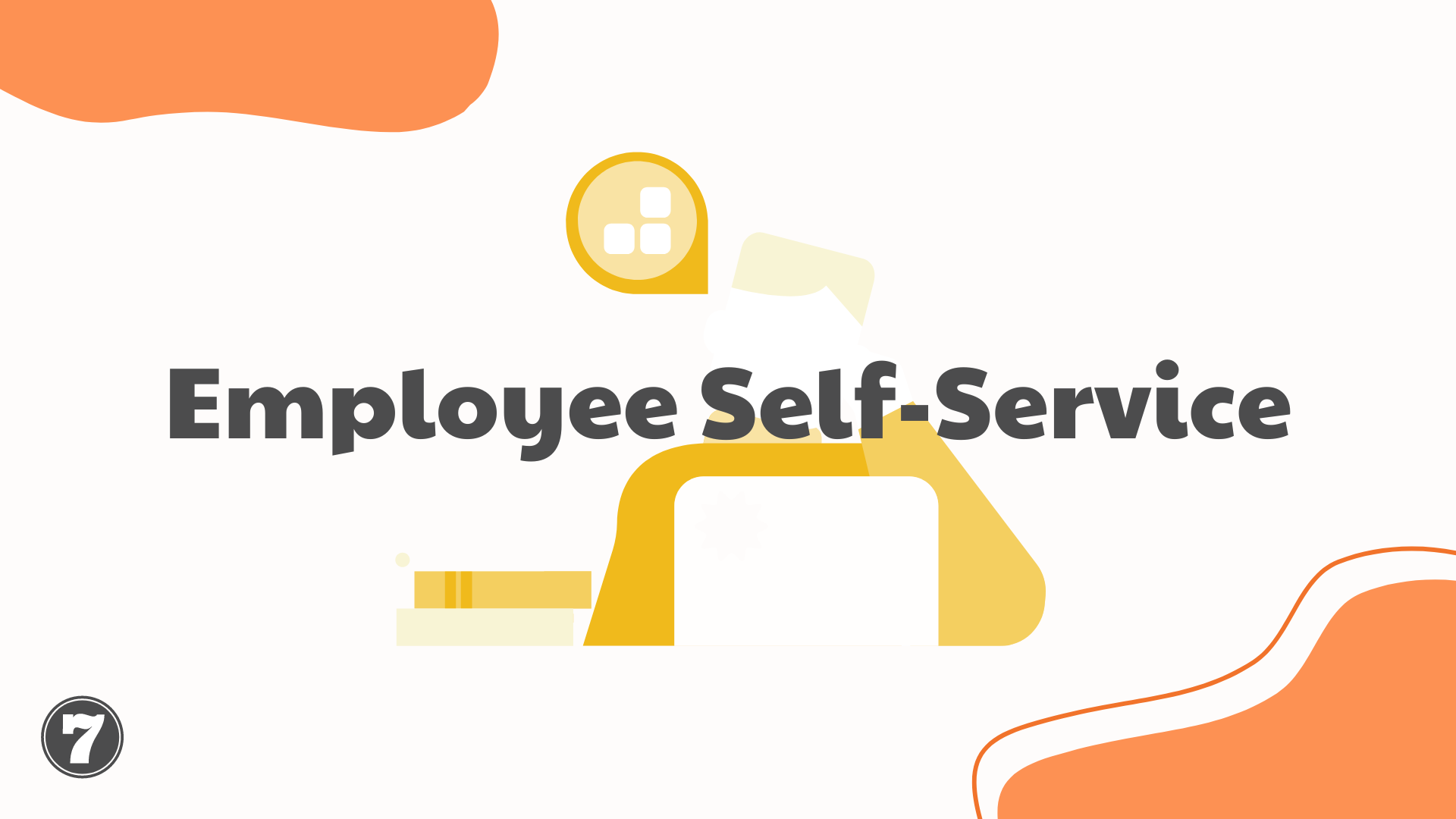
Primarily in the form of a mobile app and web portal, an employee self-service module serves as a communication hub between employees and their organisation. The traditional reliance on emails for exchanging important forms and information can often be overlooked, missorted into junk, or accidentally deleted. However, with this module in place, employees can gain the convenience of accessing all essential and up-to-date documents, including payslips, leave request forms, and performance review forms, from one convenient location. This helps to free HR professionals from basic admin tasks and ensure that all vital information is readily available to employees whenever they need it.
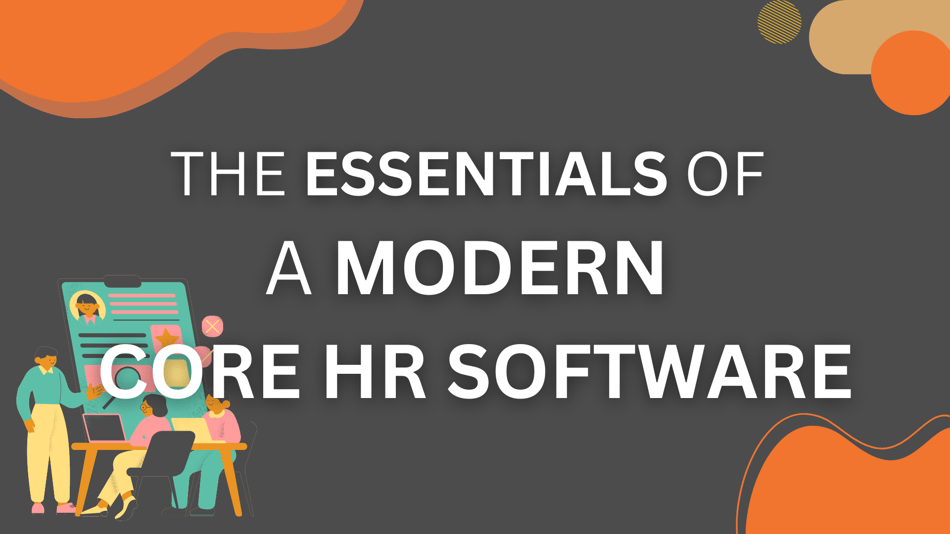


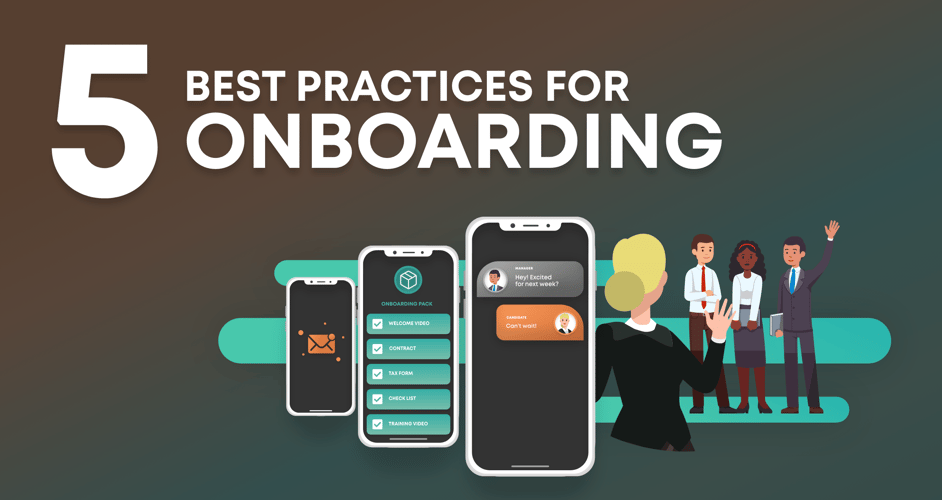

Blog comments